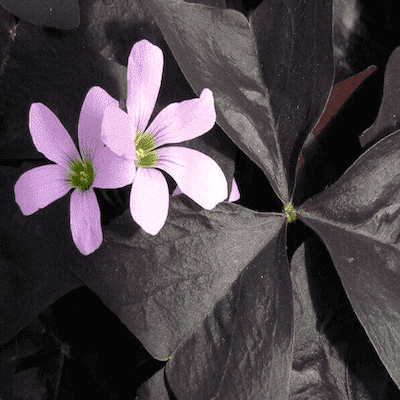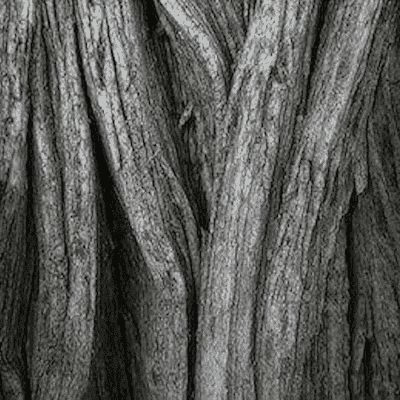Softwoods
A forest is a carbon bank, every tree a deposit.
The black ebony tree (Diospyros ebenum), native to Southeast Asia and parts of Africa, is one of the **rarest and most valuable hardwood species in the world**. Growing in **tropical and subtropical forests**, it thrives in regions with high humidity and rainfall. However, **its extreme value has led to rampant illegal logging, habitat destruction, and near extinction** in many areas.
Black ebony wood is prized for its **deep, jet-black color, fine texture, and exceptional density**. With a **Janka hardness rating of 3,220 lbf**—almost three times harder than oak—this wood is ideal for musical instruments, luxury furniture, and fine carvings. It is also highly resistant to **moisture, decay, and insects, making it a premium material for high-end woodworking**.
However, **the rarity and slow growth rate** of black ebony make it a prime target for illegal loggers. A single mature ebony tree can take over 150 years to reach full size, and because the **darkest heartwood is the most valuable, many trees are cut down prematurely before they can fully develop their prized black core.
Due to its high value, black ebony has become a major target for illegal logging operations, often carried out by criminal syndicates and corrupt officials. In countries like **Madagascar, Cameroon, and the Democratic Republic of Congo**, poachers operate deep in the forests, cutting down trees **without permits or reforestation plans**.
Madagascar, home to some of the world’s most endangered ebony species, has faced an epidemic of illegal logging for decades. Despite a ban on ebony exports, illegal loggers continue to harvest and smuggle the wood through black market supply chains. In many cases, these operations are linked to **corrupt government officials and international buyers**, making enforcement nearly impossible.
Entire forests in Madagascar’s Masoala and Marojejy National Parks**—both UNESCO World Heritage Sites**—have been illegally logged, causing irreversible environmental destruction** and threatening **endemic wildlife, including lemurs.
Cameroon and the DRC are two of the biggest suppliers of illegal black ebony to China and European markets. Here, timber mafias operate with impunity, using **bribery and fake export licenses** to move illegally harvested ebony across borders.
Local communities suffer the most, as these illegal operations strip the forests of their **natural resources**, leaving behind degraded land and economic hardship. Many villagers are coerced into working for logging gangs, earning meager wages while the **real profits go to foreign markets**.
Illegal logging of black ebony has devastating consequences beyond just the loss of valuable wood:
Several global efforts aim to combat the illegal trade of black ebony, including:
With its incredible value, a single mature black ebony tree **could be worth up to $1 million** on the black market. However, without urgent conservation efforts, this species may vanish within the next century.
The future of black ebony depends on sustainable forestry, ethical sourcing, and strict enforcement of environmental laws. Consumers, businesses, and governments all have a role to play in stopping illegal logging and protecting the world’s last ebony forests.
Black Ebony is one of the most valuable and expensive types of wood in the world; prized for its dark heartwood. Traditionally, Blackwood has been used for charcoal, native carvings, combs, needles, cups and knife handles. Because of its high density, texture and waxiness, it is ideal for the production of woodwind musical instruments like clarinets and is a superior wood for holding the metal fittings of guitar fret boards and prized for the making of fine furniture.
Because of the relative rarity of high-quality, Black Wood commands a high price. Sawn logs currently sell at US $300,000 per cubic foot while processed timber for clarinets fetches up to US $450,000 per cubic meter. (Sebastian M. M. Chuwa - Conservation of the Mpingo Tree (Dalbergia melanoxylon Guill & Perr.) in Tanzania). To put into perspective, high-quality veneer grade white oak sawlogs sell on average for US $120 per cubic meter. (MJK Marketing). Due to the high value of this wood, many species of Ebony are now extinct, on the verge of extinction, endangered or vulnerable.
Black Ebony has been a wood that for two, or three, or four hundred years, we’ve gone into countries, and we’ve used it until it’s all gone. Literally. Then we move into another country, and we take their Black Ebony till it’s all gone." - Bob Taylor (Taylor Guitars)
Some Black Ebony species have been placed on the endangered species list published by IUCN - The IUCN Red List of Threatened Species.
Gaboon Ebony is listed in the CITES Appendix III and is on the IUCN Red List. Gabon Ebony is listed as endangered due to extensive logging the past 100 years. This tree is now classified as commercially extinct and endangered. Black Wood is also the heaviest wood in the world weighing more than 70 pounds per cubic food. Balsa Wood on the other hand is one of the lightest woods weighing less than 1 pound per cubic foot. Interestingly, a tree’s growth rate seems to be related to weight. As the heaviest wood, Black Ebony is also the slowest growing at just one half of an inch per year, while Balsa can grow 10 feet or more per year.
Mun Ebony is one of a handful of Ebony tree species that are native to Asia: more specifically, it’s native to Vietnam and Laos. Due to exploitation and drastic reductions in natural populations, export of this species is currently banned. It is on the IUCN Red List as critically endangered due to a reduction of over 80% in the past three generations, caused by a decline in its natural range, and over harvesting.
Makassar Ebony was considered a replacement for African Black Ebony, often named as such to keep up with demand and fetch a higher price. It is on the IUCN Red List due to a population reduction of over 50% in the past three generations.
African Black Ebony has been classified as vulnerable due to unsustainable harvesting. If the current trend continues, industry experts predict that this tree may be on the path to extinction within 15 years. (american.edu) (African Timber Ban - Uta Saoshiro) (African Blackwood - Mpingo)
Wild Dwarf Ebony is already extinct. Artificial Cultivation has been underway in an effort to reintroduce a cloned species back into the wild.
Typically, Black Ebony does not grow in thick stands or under a closed forest cover but prefers a more solitary existence, often taking hold in rocky and infertile soils where other plants cannot survive. This characteristic seems to derive from its inability to compete successfully with other plants. During its early years the tree develops an extensive system of roots to sustain its life during the long months of the African dry season. Growth of the tree is incremental; it takes 70-200 years to attain a usable size and mature trees never exceed a height of 9 m. (about 30 feet) and 0.3 m. (1 foot) in diameter. Some prize specimens have been reported with a 1 m. (3 feet) diameter and a 5 m. (16 feet) clear bole, but these were rare treasures of a once virgin savannah.
Black Ebony is a multi-branched, many-stemmed, spiny shrub of dry woodland and savannah that drops its leaves in the dry season. The leaves are pinnate with 3-5 leaflets, flowers are white and sweetly scented, and the fruits are a blunt pinnate pod with 1-4 seeds, which are in short supply. Flowering takes place in the second dry season, covering most of the branches when the tree is leafless, much like a temperate fruit tree. Seed pods mature about 7 months after flowering. The trunk or bark is pale grey to pale brown and the bole is often deeply fluted but usually under 5 feet long to the first major branch, under 11 inches in diameter and often finely scored in the wild. It commonly has more than one stem. Large trees may have low buttresses, especially on the branches and boles of younger trees. Older trees are heavily branched with a well-developed crown.
Black ebony wood is one of the most **valuable and rarest hardwoods in the world**, prized for its deep, dark coloration and dense, fine grain. However, **not all ebony wood is created equal**—its grading and market value are determined by several key factors, including color, age, and purity.
Ebony is graded primarily based on its **color, density, and age**. The darker the wood, the higher its value. Below is a breakdown of the different grades of ebony wood:
The scarcity of true black ebony is due to overharvesting and illegal logging. Most of the **marketable ebony trees were harvested centuries ago**, leaving very few mature specimens today. The remaining old-growth trees are under strict conservation laws to prevent extinction.
Because of this, ebony wood from younger trees is often dyed or treated to mimic the deep black tones of **pure ebony**, but these processed woods lack the density and natural beauty of true aged ebony.
Due to its high density, smooth texture, and deep black color, ebony is a luxury material for various applications, including:
With natural ebony forests disappearing, there is a push toward sustainable plantations and responsible harvesting. Several conservation groups and ethical manufacturers are investing in **replanting programs** to ensure future supplies of this legendary hardwood.
One such initiative is sustainable ebony plantations, where young trees are cultivated under controlled conditions, allowing for regulated harvesting without endangering natural forests. These plantations help prevent illegal logging while ensuring a steady supply of high-quality ebony wood.
Because of its rarity, ebony commands a **high market price**, especially for pure black ebony sourced from old-growth trees.
Note: Prices fluctuate based on **availability, quality, and geographic location**.
Ebony wood remains one of the most coveted hardwoods in the world, valued for its deep color, fine texture, and versatility. However, due to deforestation and illegal harvesting, responsible sourcing and sustainable farming are critical to ensure its availability for future generations.
There may be a solution for disappearing Black Ebony. As it happens, this tree makes an excellent bonsai tree. They grow small and compact, typically attaining a height of just 3 or 4 feet. Annual reductions will keep the tree small and squat. Pruning will also increase trunk width, which is desirable for future wood harvesting. It can be grown indoors or a greenhouse if the outdoor climate is less than suitable. A few thousand people growing Bonsai Black Ebony would keep these valuable trees from extinction, which scientists predict will be less than 15 years from now.
Black ebony bonsai trees are rare and highly prized for their unique appearance and the challenging nature of their cultivation. Bonsai is the art of growing small trees in containers, and it involves shaping and pruning the trees to create miniature versions of full-grown trees.
Black ebony bonsai trees are typically grown from seed or cuttings and require specialized care to thrive. The trees prefer warm, humid environments and need frequent watering to prevent the soil from drying out. They also require regular pruning to maintain their small size and shape.
Due to the slow growth rate of black ebony trees, it can take many years for a bonsai tree to mature and develop the characteristic dense, dark wood that makes this species so valuable. As a result, black ebony bonsai trees are highly prized by collectors and can fetch high prices.
It is important to note, however, that the illegal harvesting and trade of black ebony trees is a serious problem, and collectors should ensure that any black ebony bonsai trees they acquire come from sustainable and legal sources. Additionally, the cultivation of black ebony bonsai trees should only be undertaken by experienced bonsai enthusiasts who are familiar with the specialized care required for these trees.
The following comments were collected from a national wood products discussion forum using Black Ebony.
Some of the guitar companies are saying that Rosewood and Black Ebony are getting too scarce to use as fingerboard material and have switched to a synthetic for same. Wouldn't it be possible to grow either/or in the US? Is there not a climate amenable in our country somewhere? Commercial plantations in the US would ensure supply and overcome the import regulations.
From maple to oak, hardwoods whisper of centuries past, their slow growth a testament to patience and value over time.
Partner with us in a land management project to repurpose agricultural lands into appreciating tree assets. We have partnered with growingtogive.org, a 501c3 nonprofit, to create tree planting partnerships with land donors.
We have partnered with growingtogive.org, a Washington State nonprofit to create a land and tree partnership program that repurposes agricultural land into appreciating tree assets.
The program utilizes privately owned land to plant trees that would benefit both the landowner and the environment.
If you have 100 acres or more of flat, fallow farmland and would like to plant trees, then we would like to talk to you. There are no costs to enter the program. You own the land; you own the trees we plant for free and there are no restrictions; you can sell or transfer the land with the trees anytime.
Copyright © All rights reserved Tree Plantation


